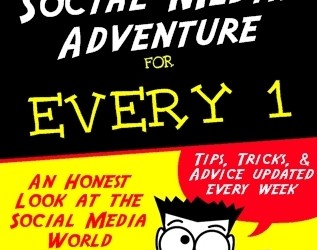Tomorrow, Tuesday January 27th is the 44th (almost) monthly Fort Wayne Social Media Breakfast organized by my friend and former co-worker Kevin Mullett. If you are within driving distance, you should join us. There should be between 50 and 75 social media people in...
ScLoHo’s Web World
Staying Connected with The Facebook Birthday Feature
Last week was my Birthday. Another trip around the sun completed as a friend likes to say. One of the cool features of Facebook is that it tells you that it is your friends birthday. I use it nearly everyday to send my friends a birthday greeting and initiate a...
UnFollowing Some Tweeps
Twitter has been a favorite communication tool of mine since I first signed up in 2008. It helped me connect with a bunch of folks locally and around the world. The ScLoHo persona really became public and well known due to it being my Twitter handle. But as I prepare...
What’s the Deal with Facebook?
The week before Thanksgiving, Facebook sent me and everyone else who has a Facebook account an email with some info on how they are updating their Terms and Conditions. If you were busy and just ignored the notice, you were in the majority. Terms and Conditions are...
Beware of “Experts” Who Violate the Basics
It was weird, really, weird. Today I'm going to rant. In my email was a solicitation from a marketing expert wanting to schedule a chat to talk about my inbound call tracking. There was another one too from a social media consultant that promised to increase the...
Yes, I Will “Google” You
You are more than the you that you think you are. You are also who others think you are. That is a timeless reality. We have our own identity, but others have their own opinion or perception of who we are too. We make an impression by our appearance, by our words, by...
A Hobby or A Profession
This is inspired by a lunch meeting I had last month. As you may/may not know, I work for Federated Media in Fort Wayne Indiana. Primarily for WOWO Radio however we have a digital division that is top notch too and I offer a whole collection of new media solutions...
How Many Customers Are You Losing Because of your Website?
I come across lots of businesses with crummy websites. They are: old and dated not completed hard to navigate not mobile friendly Pick any one of the above and you are losing business because: customers can't reach you your old site casts a negative image on your...
The State of Social Media 5 Years Ago
I was reviewing some of my online activity this week and discovered this presentation on social media and marketing that I gave October 9th, 2009 to a standing room only audience. At the time I was working full time in radio and the social media side of my life was...


